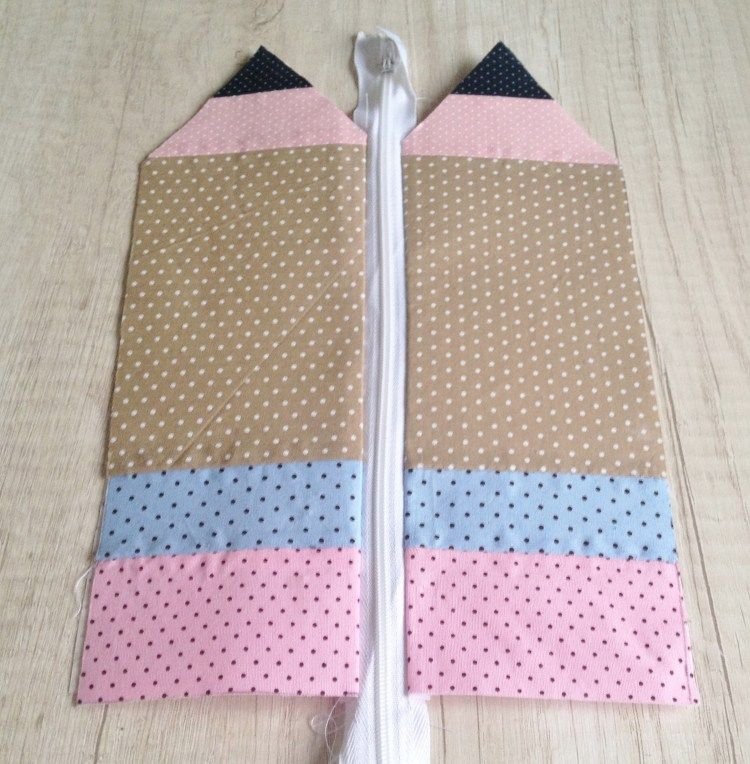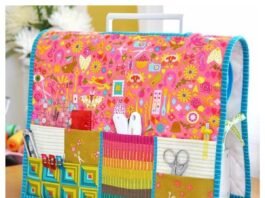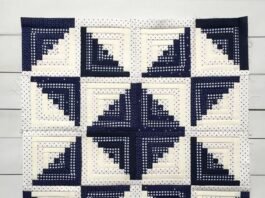If you’ve ever wanted a personalized and functional way to store your pens, pencils, or small tools, this tutorial, DIY, step by step how to make a pencil case – pattern is exactly what you need. Creating your own pencil case allows you to choose the fabric, style, size, and features that suit your personality or your child’s school needs. It’s a fun, affordable, and creative project that doesn’t require advanced sewing skills.
In this detailed guide, we’ll walk you through every stage of the process—from choosing your materials to stitching and finishing touches. With an easy pattern, a bit of patience, and this step-by-step tutorial, you’ll soon have a stylish and unique pencil case made by your own hands.
Whether you’re an experienced DIY crafter or just getting started, making your own pencil case is a rewarding project. And because it’s a compact item, it’s a great way to use up fabric scraps or experiment with new patterns. So, let’s dive into this tutorial, DIY, step by step how to make a pencil case – pattern and start crafting something practical and beautiful.

1. Choosing the Right Materials and Tools
Before you begin crafting, it’s essential to gather the correct materials. This step lays the groundwork for a smooth DIY experience and ensures your pencil case turns out just the way you envision it.
Start by choosing your fabric. Cotton, canvas, or denim are all great options because they’re sturdy and easy to sew. You can mix and match patterns for a playful look or stick with a classic solid color for simplicity.
You’ll need a zipper that matches the length of your desired pencil case. Standard 7 to 9-inch zippers are commonly used for pencil cases, but you can adjust the size based on your needs and pattern choice.
Don’t forget your sewing machine, thread, fabric scissors, ruler, pins or clips, and optionally, interfacing to give your pencil case structure. These tools are the basic components of any DIY fabric project.
Choosing the right pattern is also essential. For beginners, a rectangular pencil case is the easiest to follow, and many tutorials offer printable templates to make measuring and cutting simpler.
If you want a pencil case with more features, such as inner compartments or decorative details, select a more advanced pattern that includes these options. The key is to pick a design that matches your skill level and end goal.
Having all your materials organized before starting allows you to focus on the crafting process. It eliminates distractions and helps ensure each step in your step by step how to make a pencil case – pattern goes smoothly.
2. Cutting and Preparing the Fabric Pieces
Now that you have your materials ready, it’s time to prepare the fabric. This part of the tutorial is crucial because precision in cutting ensures your final product has clean lines and fits together correctly.
Lay your fabric flat on a clean surface and use a ruler or measuring tape to mark the dimensions based on your pattern. Standard pencil cases are usually about 9 inches wide by 5 inches tall, but you can customize the size.
Use fabric scissors or a rotary cutter to cut your main fabric pieces. You’ll need two outer fabric pieces, two lining pieces, and if you’re using interfacing, two pieces of that as well.
Once cut, iron your fabric to remove any creases. If you’re using interfacing, iron it onto the wrong side of your outer fabric pieces to add durability and shape.
If your DIY pattern includes any special design elements—like pockets or appliqué—this is the time to cut and prep those extras as well. Always double-check that everything is aligned before moving on.
Use fabric clips or pins to stack your layers in the correct order. Typically, you’ll place the outer fabric and lining pieces together with the zipper sandwiched in between, ready for sewing.
Preparation is often overlooked, but it’s one of the most important parts of any step by step how to make a pencil case – pattern. A few extra minutes spent here will save you from mistakes during sewing.
3. Sewing Your Pencil Case Together
Now comes the most exciting part of the DIY tutorial—sewing your pencil case. Don’t worry if you’re new to sewing; this step-by-step method keeps things simple and clear.
Start by sewing the zipper. Line up your fabric so that the zipper is facing down between the outer and lining pieces. Use a zipper foot on your sewing machine for better control and stitch along the edge.
Repeat the same process for the other side of the zipper. Once sewn, you should be able to fold the fabrics back and see your zipper in the middle with clean fabric on both sides.
After attaching both sides, topstitch near the zipper edge to keep the fabric from getting caught when you open and close the pencil case. This also gives a more professional look.
Next, unzip the zipper halfway (very important!) and fold the fabric pieces so that outer fabrics are facing each other and lining pieces are facing each other. Clip or pin around the edges to secure.
Sew around the entire edge, leaving a 2-inch gap in the bottom of the lining fabric. This will allow you to turn the pencil case right-side out once it’s stitched together.
Once everything is sewn, trim any excess fabric and corners to reduce bulk. Turn the case inside out through the gap, push out the corners with a pencil, and sew the opening closed. Your DIY pencil case is now complete!
4. Customizing and Decorating Your Pencil Case
With the basic pencil case complete, it’s time to add personal touches. Customization is where your creativity really shines, and it’s what makes each DIY project truly one of a kind.
Add decorative stitching along the edges for a colorful accent. You can use contrasting thread or even embroidery to add names, shapes, or initials for a personal touch.
Consider sewing on patches, lace, or ribbons to give your pencil case a unique flair. These details are especially fun for kids’ pencil cases or themed school supplies.
You can also use fabric paint or iron-on transfers to decorate your case. These options allow you to create bold, graphic designs without extra sewing.
Want to add functionality? Sew in internal pockets or elastic loops to hold items like erasers or flash drives. This makes your pencil case even more useful for school or work.
Try experimenting with different shapes—oval, triangular, or boxed-bottom designs. Many tutorials offer free templates for advanced pencil case patterns that still follow step by step instructions.
No matter how you decorate it, the satisfaction of making something both beautiful and useful with your own hands is the real reward of this tutorial, DIY, step by step how to make a pencil case – pattern.
FAQ – Frequently Asked Questions
Q1: What fabric is best for a DIY pencil case?
Cotton and canvas are the most popular choices. They’re easy to sew and durable enough for daily use.
Q2: Do I need a sewing machine to follow this tutorial?
While a sewing machine makes the process faster, you can sew a pencil case by hand using basic stitches if needed.
Q3: Can kids make their own pencil cases using this tutorial?
Yes, with supervision. This step by step how to make a pencil case – pattern is beginner-friendly and suitable for older children or teens with an interest in crafting.
Q4: Is it possible to make a no-sew pencil case?
Yes, some DIY tutorials use glue or fabric tape instead of stitches. However, sewn cases tend to last longer.
Q5: How long does it take to make a pencil case?
For beginners, the process might take 1-2 hours. As you become more comfortable, you can finish one in under an hour.
Q6: Can I wash the pencil case after it’s made?
Yes, if you use washable fabric and thread. Always pre-wash your fabric before starting to avoid shrinkage later.
Conclusion
Creating your own pencil case through a tutorial, DIY, step by step how to make a pencil case – pattern is a satisfying and accessible project. With just a few materials and a bit of time, you can craft a custom, durable, and stylish pencil holder that reflects your personal style or makes a thoughtful gift.
We’ve walked through everything from selecting materials, cutting fabric, sewing your case, to customizing it with your own unique flair. Whether you’re crafting for school, work, or fun, this pencil case tutorial gives you all the tools and knowledge you need.
If you found this guide helpful, please leave a sincere opinion below and let us know how your pencil case turned out. Got ideas for improvement or want another sewing tutorial? Share your suggestions—we’d love to hear them!
Happy crafting!





